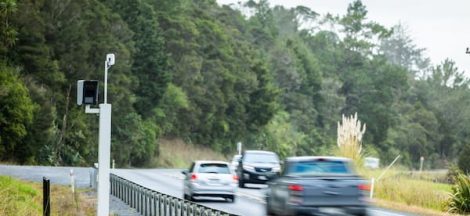
- The
Kiwi unemployment rate rose to 5.3% from 5.2%, and
employment was flat over the quarter. The broader measure of
slack in the labour market, the underutilisation rate,
lifted to 12.9% from 12.8%. - The moderation in wage
inflation continued. Annual wage growth slowed to 2.1%, down
from 2.3% – the weakest in over four years. Weaker wage
inflation is helping to drive further easing in domestic
inflation. It’s that famous Phillips
curve. - Today’s data reinforces the need for
further monetary policy easing. Downside risks to
medium-term inflation are growing given the soft labour
market and dimming global outlook. We expect the RBNZ to cut
the cash rate by 25bps at the November
meeting.
The latest look into the labour market
lacked any big bang fireworks. Market conditions loosened a
little over the September quarter. As expected, the
unemployment rate lifted to a nine-year high of 5.3%, up
from 5.2%. The underutilisation rate – a broader measure
of untapped labour market capacity – rose to 12.9% from
12.8%, the highest since September 2020.
Employment
was flat over the quarter as well-signalled by the monthly
filled jobs data. The appetite for labour is slowly
improving. Filled jobs appears to have hit a trough in July.
Since then, filled jobs began to tick higher with a decent
(albeit likely overstated) 0.3% in September. Given current
weak economic activity, we don’t expect labour demand to
take off like a bucking horse. Annual employment growth is
still down 0.6%. But the September quarter likely marked the
turning point.
Advertisement – scroll to continue reading
A duo of a 0.3% lift in working age
population but flat employment resulted in both higher
unemployment and lower participation in the labour force.
The number of unemployed in New Zealand hit 160k, the
highest since March 1994 (162k). The labour force
participation rate dropped to 70.3% from 70.5%. It’s the
lowest in over four years. Right now, no one is dusting off
their CVs and rushing to get into the market. The economy is
simply not strong enough.
Hours worked provided a
sparkle of good news. Total hours worked lifted 0.9% over
the September quarter, breaking a steady seven-quarter
stretch of declines. Employers had previously been slashing
hours in response to soft economic demand. But this appears
to be reversing. However, on an annual basis, hours worked
is still down 1.4%. The quarterly lift supports forecasts
for a rebound in economic activity over the third
quarter.

Wage
growth continues to moderate. More and more workers are
receiving smaller and smaller pay rises. For example, the
number of workers receiving a pay rise above 2% but below 3%
has been steadily increasing for the last two years. And the
wage bill (private sector Labour Cost Index) rose 2.1% over
the year – the lowest since March 2021. That’s quite the
drop from the 4.5% peak and a return to a smidge above the
pre-covid average.
Today’s report came largely in
line with our and the RBNZ’s forecasts. The labour market
appears to be stabilising. But the degree of slack still in
the market should provide the RBNZ with comfort that
inflation will return to the 2% target next year. Indeed,
with weak wage growth, the labour market is not a source of
inflationary pressure. The door remains wide open for a
25bps cut to the cash rate later this month.
The
evolving employment landscape
Employment growth over
the September quarter broke a year-long streak of quarterly
declines. The flat quarterly print in job growth is still
far from ideal, but the stabilisation is welcome. Downwards
revisions to employment growth over the earlier parts of the
year did however see annual employment down 0.6%. As such, a
net 19k jobs were lost over the year to September. But
that’s far fewer than the ~30k we’ve been averaging over
the last couple of reports. Nevertheless, job creation will
likely still take some time from here. But the worst appears
to be behind us with the September quarter marking a
possible turning point in employment growth.
The
composition of the labour force is also evolving. The number
of part-time workers appears to be declining, while the
full-time workforce is beginning to recover. Employment in
full-time roles increased for the second straight quarter,
reversing the downward trend seen throughout most of 2024
and early 2025. In contrast, part-time employment has now
declined for two quarters in a row. Despite the recent lift,
full-time employment remains 0.8% below levels seen a year
ago. Meanwhile, part-time employment is up 0.1% annually.
Still, the shift may be signalling a growing capability
among employers to offer full-time roles as the economic
outlook into 2026 improves.
Looking across all age
groups, it’s clear the younger cohort has borne the brunt
of the current weak labour market. For those in the 15-24
year age group, the unemployment rate lifted to 15.2% from
13.1%.
Weak wages
The slack in the labour
market and a slowdown in inflation has shifted the balance
of power back to employers. The shift is shown by the
continued cooling in wage costs. The costly combo of high
inflation and labour shortages lit a fire under wage growth,
with the private labour cost index (LCI) hitting a
series-high of 4.5%. That fire has now been put out, with
the wage growth slowing to 2.1% – the lowest in four
years.

The
distribution of annual wage growth also underscored cooling
wage pressures. The proportion that received no pay increase
rose to 44% – the highest since June 2021. Meanwhile the
proportion of jobs that did receive a pay rise dropped to
56%, smaller than the 63% share last year. And the
distribution of wage increases continues to move away from
the chunky increases of more than 5% which was once the
favoured rate. That proportion rose to a high of 40% in
2023, and has fallen to just 11% today. Majority are
pocketing increases of between 3% and 5%. And now that
inflation has corrected lower, the proportion receiving wage
increases of more than 2% but less than 3% has been steadily
increasing, from 8% last year to 15%. It’s yet another
clear sign of softening employment
demand.
Source link



